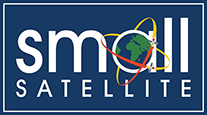Session
Session VI: Advanced Technology 3-Enterprise
Location
Salt Palace Convention Center, Salt Lake City, UT
Abstract
Optical Earth Observation (EO) sensors can be significantly affected by atmospheric conditions, particularly cloud cover, which can obscure their images and reduce the information content in the final image. It is estimated that over 50% of the Earth’s surface is covered by clouds at any given moment. As a result, up to half of the data captured by visible EO satellite imagers is rendered unusable for most applications. Transmitting this unusable data, even in a compressed form, unnecessarily utilises valuable communications downlink bandwidth. This is particularly acute for hyperspectral EO missions, where the tens to hundreds of bands per acquisition result in a large redundancy due to cloud obscuration across bands. This paper presents flight results of an AI-driven on-board Cloud Removal and Compression (CRC) approach that couples automatic detection and removal of cloudy image regions with hardware compression of the remaining data. This approach provides lossless EO data compression of non-cloudy regions, while achieving increased compression ratios as a result of the cloud removal, resulting in an increase in the useful data transmitted to ground and thereby significantly enhancing transmission efficiency and increasing satellite asset utilisation. An on-orbit experimental campaign involving five hyperspectral images captured by the CogniSAT-6 satellite across various global locations verified the CRC solution in-flight and demonstrated enhanced compression ratios over and above content-unaware compression approaches. This effectively showcased the utility and capability of an AI-driven on-board processing solution for downlink efficiency enhancement on EO spacecraft.
Document Type
Event
On-Orbit Validation of an AI-Enabled Cloud Removal and Compression Solution for EO Satellites
Salt Palace Convention Center, Salt Lake City, UT
Optical Earth Observation (EO) sensors can be significantly affected by atmospheric conditions, particularly cloud cover, which can obscure their images and reduce the information content in the final image. It is estimated that over 50% of the Earth’s surface is covered by clouds at any given moment. As a result, up to half of the data captured by visible EO satellite imagers is rendered unusable for most applications. Transmitting this unusable data, even in a compressed form, unnecessarily utilises valuable communications downlink bandwidth. This is particularly acute for hyperspectral EO missions, where the tens to hundreds of bands per acquisition result in a large redundancy due to cloud obscuration across bands. This paper presents flight results of an AI-driven on-board Cloud Removal and Compression (CRC) approach that couples automatic detection and removal of cloudy image regions with hardware compression of the remaining data. This approach provides lossless EO data compression of non-cloudy regions, while achieving increased compression ratios as a result of the cloud removal, resulting in an increase in the useful data transmitted to ground and thereby significantly enhancing transmission efficiency and increasing satellite asset utilisation. An on-orbit experimental campaign involving five hyperspectral images captured by the CogniSAT-6 satellite across various global locations verified the CRC solution in-flight and demonstrated enhanced compression ratios over and above content-unaware compression approaches. This effectively showcased the utility and capability of an AI-driven on-board processing solution for downlink efficiency enhancement on EO spacecraft.


